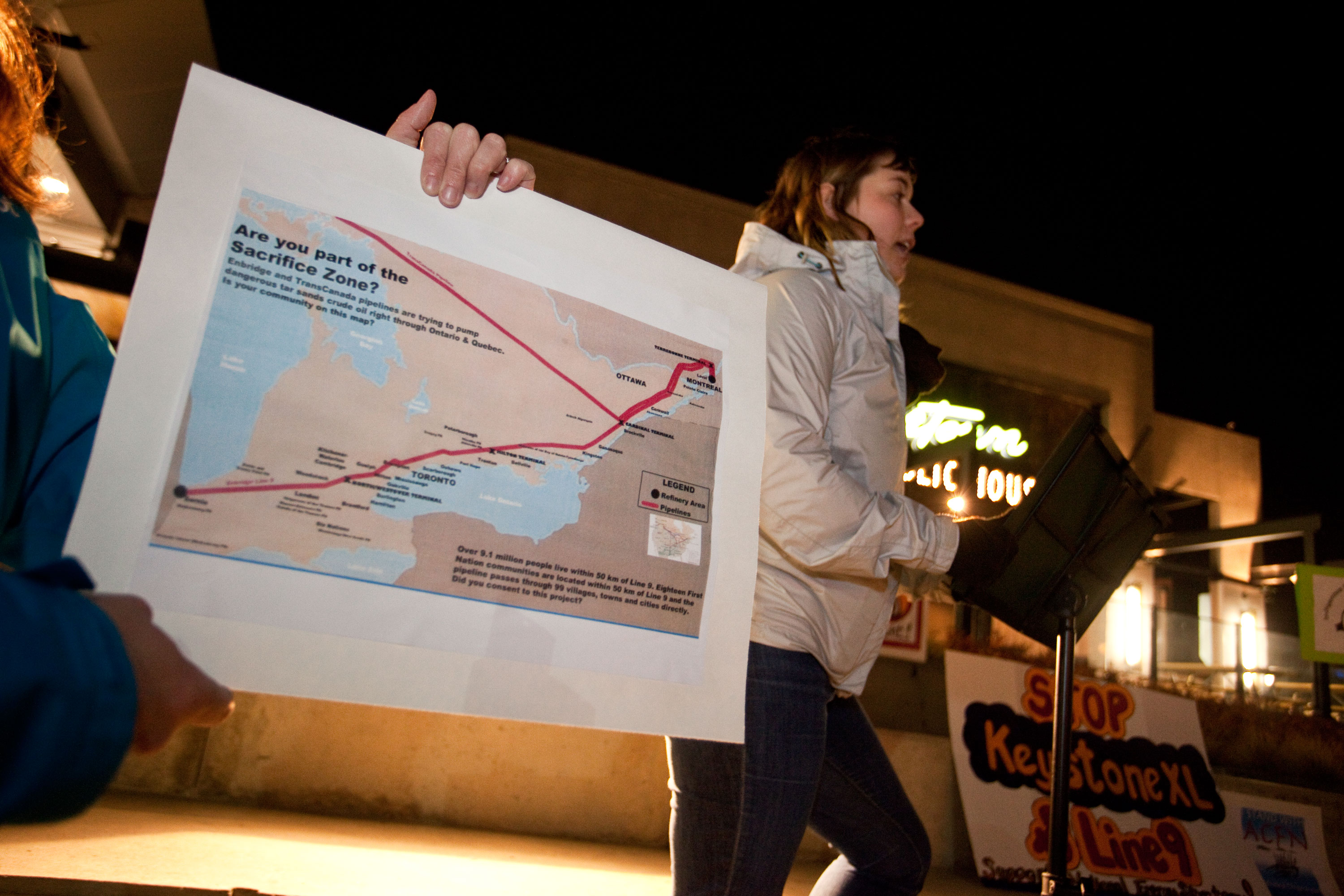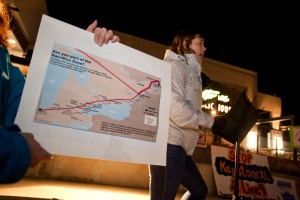Line 9 reversal approved


The National Energy Board (NEB) has approved the second phase of the flow reversal of Enbridge’s 38 year-old Line 9 pipeline, which passes through the Region.
The pipeline, which runs from Montréal to Sarnia, has been a source of debate locally and in the province.
The decision was precluded by months of public hearings.
The motion was approved Thursday. The pipeline would be carrying diluted bitumen, a mixture of heavy crude oil and natural gas.
“There was support and opposition on both sides and the opposition was quite vocal, which is fair,” said Carole Léger-Kubeczek, communications officer for the NEB.
“People need to share their views,” she said.
The pipeline crosses many ecologically-sensitive areas and numerous waterways.
These feed into Lake Erie and Lake Ontario, while also cutting across highly populated areas.
“It was deemed to be in the public interest to do so and the Board assessed all of the information that was gathered and tried to strike a balance between safety, environmental concerns and also financial efficiency,” added Léger-Kubeczek.
However, members of local advocacy groups have been particularly vocal about their opposition to the decision.
“It was a very exclusive process in terms of how people were able to input feedback to them on the decision,” said Rachel Avery of Waterloo Region Against Line 9.
“A lot of people weren’t able to participate or intervene in the hearings or even send statements, so it’s hard [for the NEB] to know what’s in the public’s best interest.”
She continued, “It’s what we see as a broader shift in the Harper government to make much more of the decisions in their executive capacity.”
However the NEB explained that it was “a new method” to participate in their hearings.
“This hearing was the first one trying out this new approach,” Léger-Kubeczek said.
“We reviewed the information that was submitted on the record and not only the information for these particular proceedings, this reversal, but also we went as far back as when the pipeline was first approved in 1975.”
Despite the assurances that all public concern was heard, some skepticism remains.
Avery contested that the NEB “disregarded pretty much all of the conditions that people were requesting.”
She believes that they did not truly listen to any concerns coming from indigenous groups — namely about their property rights.
Environmental concerns arising from a fear of an oil spill were also prominent.
“They didn’t request the proper hydrostatic testing for the pipeline so they aren’t even assuring the basic safety principles of the pipeline” said Avery.
Enbridge plans to increase the amount of barrels that travel through the line per day, which would increase revenue.
Locally, however, there are low expectations of any economic benefits.
“I’m not aware that there are any economic spin offs,” said regional chair Ken Seiling.
Avery added, “You have to think of what kind of jobs do we want [a]nd where we stand.”
“The jobs we want are not going to put people in direct contact with hazardous materials such as diluted bitumen,” he continued. “They are going to be jobs that will build sustainable futures and building local solutions.”
Line 9 won’t start pumping immediately though.
“Bitumen is not going to be flowing for 30 to 90 days so there’s still a bit of a window to intervene.”
Avery is focussing more locally.
“Locally there is still a lot of awareness raising to do,” notes an optimistic Avery.

